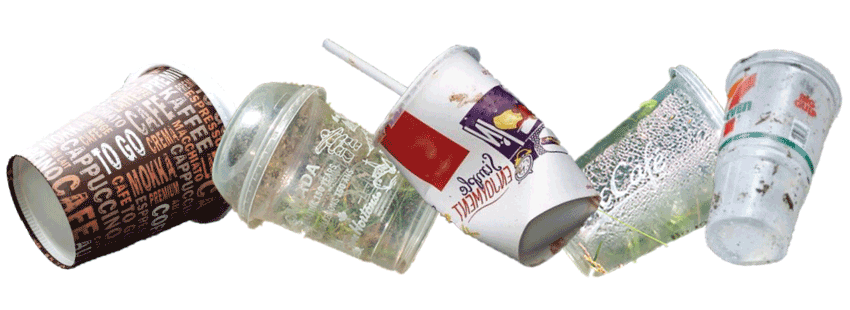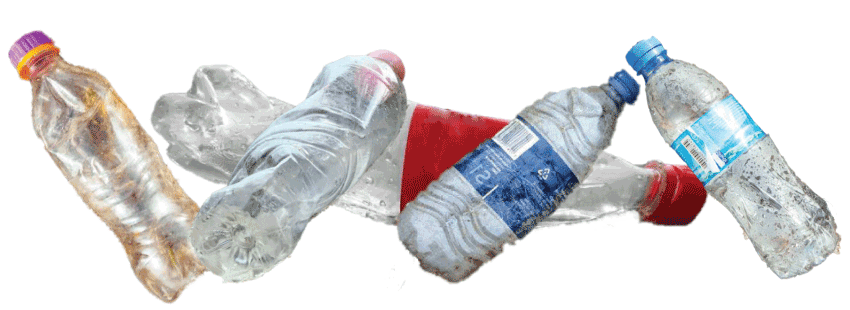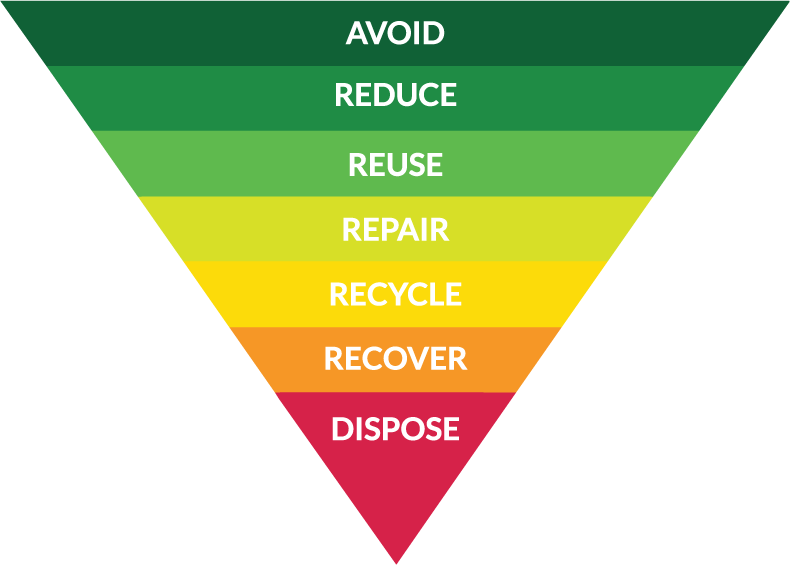The Price We Pay
Our love of “disposables” has come at a huge cost.
Production of single-use products are depleting precious resources, burning fossil fuel and causing pollution.
The waste they then create are overflowing in landfills, clogging our waterways, choking our oceans, killing wildlife, and poisoning our food and water supply.
The Scale Is Mind-Boggling


Depending on the source you read, the world uses around 600 billion to 900 billion single-use cups each year, including paper, foam and plastic cups.
99.75% of all disposable cups are not recycled, even paper cups can take more than 20 years to decompose in landfills, where they produce heat-trapping methane gas.
Worldwide, we consume more than 400 billion liters of bottled water and 600 billion liters of soft drinks each year, using around 650 billion plastic bottles.
Every minute, around 1.2 million plastic bottles are discarded worldwide and each year, 16 million tons of plastic waste flow into the oceans.
More than 90% of all plastic bottles are not recycled.
The Scale Is Mind-Boggling

Depending on the source you read, the world uses around 600 billion to 900 billion single-use cups each year, including paper, foam and plastic cups.
99.75% of all disposable cups are not recycled, even paper cups can take more than 20 years to decompose in landfills, where they produce heat-trapping methane gas.

Worldwide, we consume more than 400 billion liters of bottled water and 600 billion liters of soft drinks each year, using around 650 billion plastic bottles.
Every minute, around 1.2 million plastic bottles are discarded worldwide and each year, 16 million tons of plastic waste flow into the oceans.
More than 90% of all plastic bottles are not recycled.
The Costs Are Devastating
Producing 1 paper cup requires
0.95 liters of fresh water
4.1 grams of petroleum
1.8 grams of chemicals
40 grams of wood
113 grams of carbon dioxide
6.8 grams of waste
0.09 m2 of natural habitat destruction
Producing just 100 billion paper cups
95,000,000,000 liters of fresh water
410,000 tons of petroleum
180,000 tons of chemicals
4,000,000 tons of wood
11,300,000 tons of carbon dioxide
680,000 tons of waste
37,500,000 trees and 9,000 km2 of habitat destruction
The Impacts Are Alarming
Producing 1 plastic bottle requires
1.5 liters of fresh water
133 grams of petroleum
24 grams of plastic
140 grams of carbon dioxide
21 grams of waste
Producing 650 billion plastic bottles
975,000,000,000 liters of fresh water
86,593,000 tons of petroleum
15,330,000 tons of plastic
90,700,000 tons of carbon dioxide
13,950,000 tons of waste
Recycling Is Not The Solution
50 years of recycling campaigns and more than 90% of all single-use cups and bottles still end up in landfills, incinerators, rivers and oceans.
MATERIAL
CONTAMINATION
The polyethylene lining of paper cups make them nearly impossible to recycle
Plastic bottles are made from various polymers; caps and labels also need to be separated to be recyclable
LAGGING
TECHNOLOGY
There are more than 260 types of plastic polymers that are difficult to separate
Unless properly separated, it affects their properties and leads to defects in the recycled materials
LAGGING
INFRASTRUCTURE
Trash separation is still not universal and waste companies have no financial incentives
Many local governments do not have the budget or incentive to build the infrastructure
CORPORATE
PRIORITIES
Companies focus on their core businesses and profitability, not the environment
Most lack the expertise, resource, or incentive to substantively or comprehensively address the issue
UNATTRACTIVE
ECONOMICS
Sending waste to landfills or incinerators is cheaper and more convenient
Producing new paper and plastic cups and bottles from virgin material is easier and cheaper
INEFFECTIVE
OUTCOME
Recycling uses large amounts of energy and water, but reduces the impact by only 10%
Plastic bottles are mostly “down-cycled” into lower-grade plastics, not into new bottles
INEFFECTIVE
OUTCOME
Recycling uses large amounts of energy and water, but reduces the impact by only 10%
Plastic bottles are mostly “down-cycled” into lower-grade plastics, not into new bottles
Recycling Is Not The Solution
50 years of recycling campaigns and more than 90% of all single-use cups and bottles
still end up in landfills, incinerators,
rivers and oceans.
MATERIAL
CONTAMINATION
The polyethylene lining of paper cups make them nearly impossible to recycle
Plastic bottles are made from various polymers; caps and labels also need to be separated to be recyclable
LAGGING
TECHNOLOGY
There are more than 260 types of plastic polymers that are difficult to separate
Unless properly separated, it affects their properties and leads to defects in the recycled materials
LAGGING
INFRASTRUCTURE
Trash separation is still not universal and waste companies have no financial incentives
Many local governments do not have the budget or incentive to build the infrastructure
CORPORATE
PRIORITIES
Companies focus on their core businesses and profitability, not the environment
Most lack the expertise, resource, or incentive to substantively or comprehensively address the issue
UNATTRACTIVE
ECONOMICS
Sending waste to landfills or incinerators is cheaper and more convenient
Producing new paper and plastic cups and bottles from virgin material is easier and cheaper
INEFFECTIVE
OUTCOME
Recycling uses large amounts of energy and water, but reduces the impact by only 10%
Plastic bottles are mostly “down-cycled” into lower-grade plastics, not into new bottles
The Truth About Recycling
The Root Of The Problem
Despite the failure of recycling, significant resources are still being spent searching for new (recyclable or biodegradable ) materials.
In a world of shrinking resources, why make more “stuff” that we will throw away within minutes?
Why create more waste that we have proven to not be able to properly recycle?


Extraction of raw materials, followed by production and transportation of single-use products, have significant environmental costs.
The Root Of The Problem

Despite the failure of recycling, significant resources are still being spent searching for new (recyclable or biodegradable ) materials.
Extraction of raw materials, followed by production and transportation of single-use products, have significant environmental costs.
In a world of shrinking resources, why make more “stuff” that we will throw away within minutes?
Why create more waste that we have proven to not be able to properly recycle?


